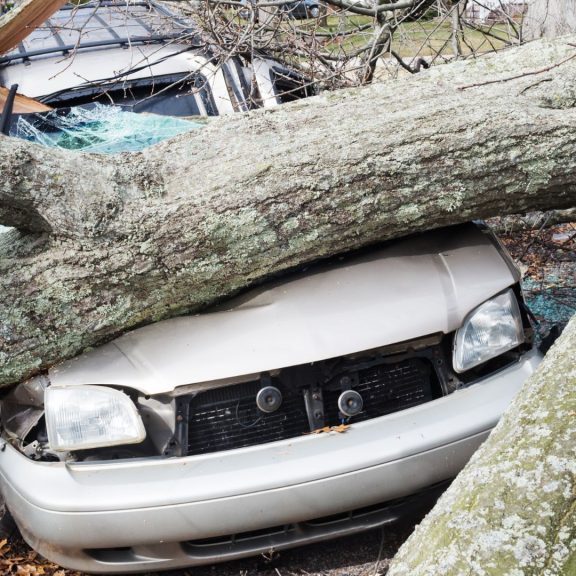
What to Do When You Encounter Weather-Related Home and Auto Damage
October 9, 2024
Severe weather, such as hailstorms, hurricanes, floods, or tornadoes, can cause significant damage to your home and car. Knowing the proper steps to take after such an event can help minimize losses and ensure you get the necessary repairs and insurance coverage. Here’s a guide to help you navigate the process when you encounter weather-related home and auto damage:
Ensure Your Safety
- Home Safety: If your home has been severely damaged, especially by events like flooding or tornadoes, ensure your family’s safety first. Evacuate if needed and stay clear of structural damage, fallen power lines, or dangerous debris.
- Vehicle Safety: If your vehicle has been damaged, ensure it’s in a safe location. If it’s stranded in a flood or debris field, don’t attempt to retrieve it until it’s secure.
Document the Damage
- Take Photos/Videos: Document all visible damage to your home and car. Include pictures of broken windows, roof damage, water damage, and any other issues. For vehicles, photograph dents, broken glass, and other physical damage.
- Write Down Details: Note when the damage occurred, the weather conditions, and other relevant information.
Contact Your Insurance Company
- Home Insurance: Most homeowner policies cover weather-related damage, though the specifics depend on the cause (e.g., floods may require separate flood insurance). Contact your insurance provider immediately and follow their procedures for filing a claim
- Auto Insurance: Comprehensive auto insurance typically covers weather-related damage, such as hail or flooding. File a claim with your auto insurer and provide all documentation.
- Understand Your Deductible: Be aware of any deductible you need to pay before insurance kicks in. Some policies may have different deductibles for certain types of weather damage (windstorm, tornado, etc.)
Prevent Further Damage
- Temporary Repairs: If possible, make temporary repairs to prevent further damage (e.g., covering broken windows with plywood or tarping a damaged roof). Most insurance companies expect you to take reasonable steps to mitigate additional damage.
- Preserve Receipts: Keep receipts for any materials or labor costs for temporary repairs, as your insurance company may reimburse you.
File an Insurance Claim
- Gather Documentation: Before filing, prepare your photos, videos, receipts for temporary repairs, and a detailed inventory of damaged or lost items.
- Meet with an Adjuster: Your insurance company may send an adjuster to assess the damage. Ensure you show them all areas of damage and provide any documentation.
- Be Persistent: If your claim is delayed or has issues, contact your insurance company regularly. If you believe the claim is legitimate, be prepared to appeal.
Work with Contractors
- Vet Contractors: Once your claim is approved, choose licensed and insured contractors to repair your home or vehicle. Avoid “storm chasers” who show up unannounced, offering cheap, quick repairs. Always ask for references and written estimates.
- Get Multiple Quotes: Get at least two or three estimates to compare costs and services for major repairs.
- Set a Clear Timeline: Work with your contractor to establish a repair timeline. This ensures they complete the job in a reasonable amount of time and with quality.
Prepare for Future Weather Events
- Strengthen Your Home: If you live in an area prone to severe weather, consider investing in impact-resistant windows, reinforced roofs, or flood protection measures.
- Auto Precautions: Try to park your car in a garage or under a shelter during storms. If you can’t, use a heavy-duty car cover to reduce hail or debris damage.
- Review Your Insurance: Ensure your home and auto insurance policies are current and adequately cover potential weather risks in your region.
Quick Checklist:
- Ensure the safety of your family and yourself.
- Document all damage with photos and notes.
- Contact your insurance companies (home and auto).
- Make temporary repairs to prevent further damage.
- File insurance claims promptly.
- Vet contractors for significant repairs.
- Take preventative steps for future storms.
By following these steps, you can minimize your losses and get your home and vehicle repaired efficiently.
